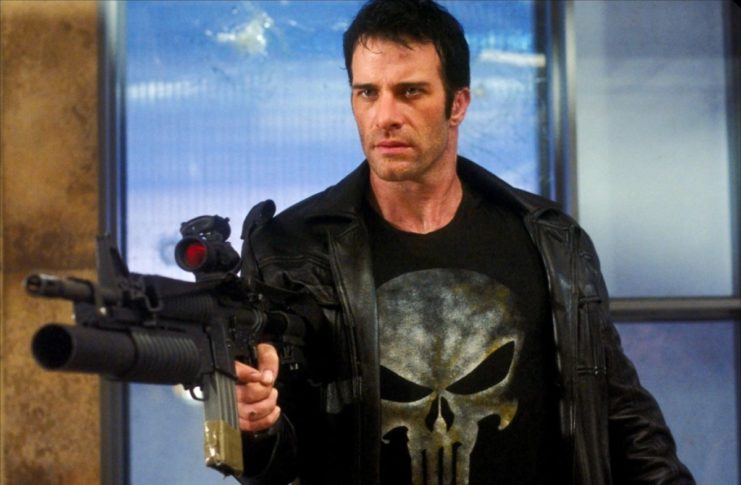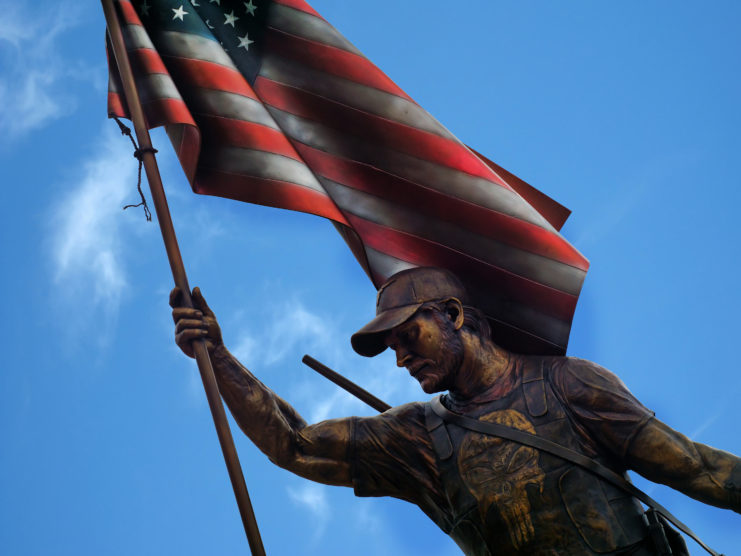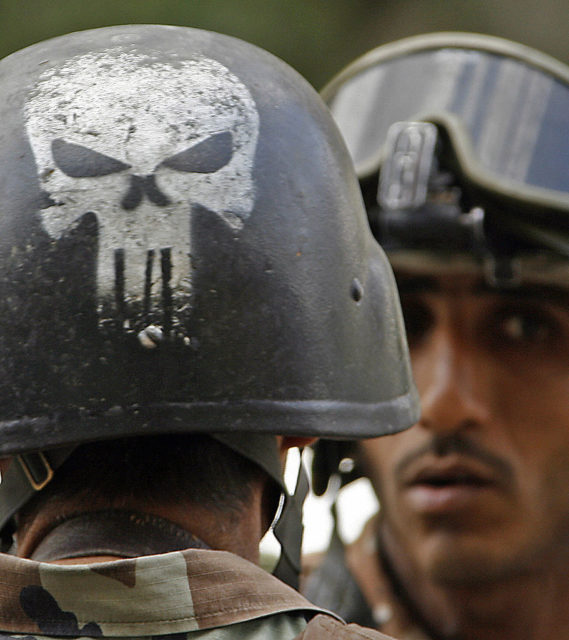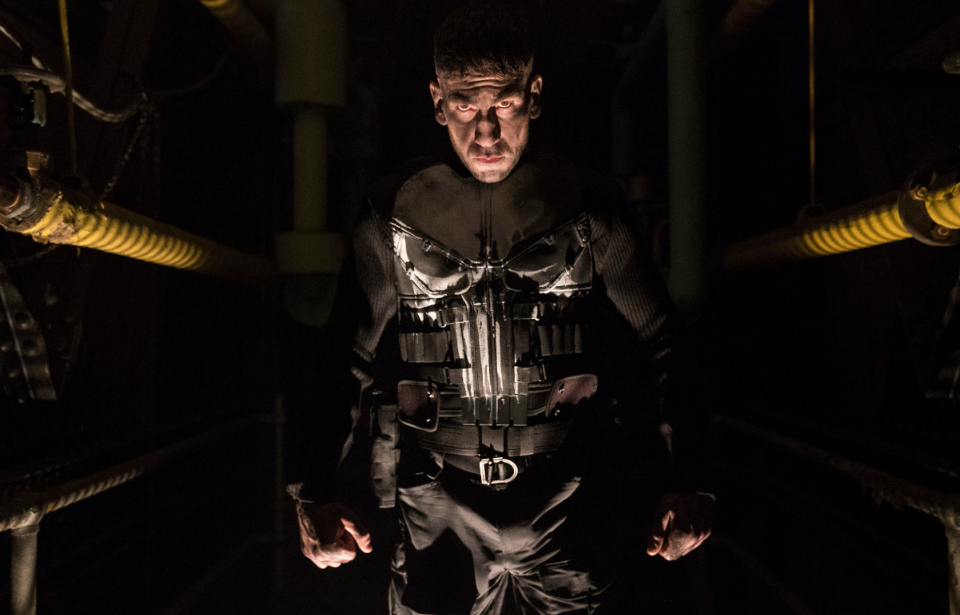Each branch the US military has their own logo – various iterations of parachutes for airborne regiments, seahorses on US Navy emblems. Sometimes, symbols are entirely unique. One, in particular, is largely separate from an individual group. Worn by various branches of the military, and, most recently, law enforcement organizations, the Punisher skull has developed a meaning all its own.
Who is the Punisher?

The Punisher skull came from the Marvel Comics character of the same name. He was introduced to the MCU in 1974 as an anti-hero to Spider-Man. The character’s real name is Frank Castle, an Italian-American Marine sniper who fought in Vietnam in the original comics and the Iraq War in more modern iterations of his story.
The Punisher’s goal was to stop crime as a vigilante, following the murders of his wife and two children by the mob. His logo, a white skull, can be seen on different members of the US military. It was removed by Marvel in 2022 and replaced by a variant of the Japanese Oni skull.
Nonetheless, troops resonate with the character and his symbol.
Adoption of the Punisher skull by the US military

Although the Punisher was initially a side character in the Spider-Man comics, he was eventually given his own series, which only helped his popularity. He subsequently earned many fans within the military as the most prominent veteran within the MCU.
Yet, it wasn’t until US Navy SEAL Chris Kyle used the Punisher skull logo that it developed a meaning with the US military. In his autobiography, Kyle recalled how his team came to adopt the symbol. “We called ourselves the Punishers,” he wrote. “He’s a real bad-a** who rights wrongs, delivering vigilante justice. A movie by the same name had just come out; the Punisher wore a shirt with a stylized white skull.
“Our comms guy suggested it before the deployment. We all thought what the Punisher did was cool: He righted wrongs. He killed bad guys. He made wrongdoers fear him. That’s what we were all about. So we adapted his symbol – a skull – and made it our own, with some modifications. We spray-painted it on our Hummers and body armor, and our helmets and all our guns. And we spray-painted it on every building or wall we could.
We wanted people to know, we’re here and we want to f**k with you,” he concluded.
The meaning behind the Punisher skull
The logo of the Punisher at a checkpoint in Baghdad pic.twitter.com/58IBj2LkDb
— Daniele Raineri (@DanieleRaineri) April 8, 2015
The Punisher skull was used by Chris Kyle and SEAL Team-3 during the Second Battle of Fallujah, and was soon adopted by Iraqi militia membered trained by American forces. It’s as an unofficial symbol for those who served in Iraq, and it wasn’t long before US police officers were adding it their uniforms and equipment, as well.
The Punisher skull hasn’t been adapted without controversy, however, and its use outside of the MCU has caught the attention of Punisher creator Gerry Conway, who commented, “I find it flattering, but also a little unnerving because I never actually felt the Punisher was one of the good guys. I don’t think the Punisher is a hero; he’s an anti-hero. He’s someone that rises up from our subconscious and acts on our behalf and is a symbol really of cultural breakdown.”
In an interview with Forbes, Conway elaborated, “The Punisher is representative of the failure of law and order to address the concerns of people who feel abandoned by the legal system.”
Continued use of the symbol

Some see the Punisher skull as having taken on a whole new meaning in recent years. Thin Blue Line spokesman Pete Forhan explained the organization’s use of the logo, saying, “[Its] less of a violent overtone, more of a promise to criminals: You might think you’re getting away with it, but it’s karma. If you’re committing violent acts, one way or another, you will be meeting consequences.”
More from us: Josef Mencik: The Last Knight Who Stood Up to the Germans In WWII
While this is certainly how the symbol is viewed by some, it was certainly never the intention behind the Marvel character. At 21 years old, Conway created the Punisher, having recently declared himself a conscientious objector from the Vietnam War. “I was an anti-war person,” he explained. I argued against it and certainly wrote against it. We’d probably be considered the weak-kneed hippies they’d want to punch out.”
Perhaps the takeaway is that the Punisher – and his logo – represent whatever the viewer takes away from the character.
